|
Музыка Украины (Folkways Records 1950)
|
|
| Музыковед | Дата: Пятница, 27.11.2015, 00:06 | Сообщение # 1 |
 Генерал-майор
Группа: Администраторы
Сообщений: 463
Статус: Offline
| 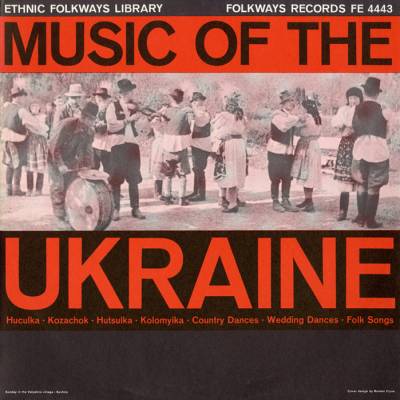
Музыка Украины (Folkways Records 1950)
ETHNIC FOLKWAYS LIBRARY FE 4443
Copyright 1950 by Folkways Records and Servicte Corp, 117 W. 46 St. NYC USA
Содержание.
01. Гуцульская коломийка
02. Казачок
03. Гуцулка
04. Сельские танцы
05. Свадебные мелодии
06. Гуцулка и казачок
07. Ветер с поля
08. Половина да саду цвите, половина вяне
Общее время - 21:38
01 - Gutsul Kolomyika (Dance-Song)
02 - Kozachok (Dance-Song)
03 - Huculka (Dance)
04 - Country Dances
05 - Wedding Melodies
06 - Hutsulka and Kozachok (Dances)
07 - Folk Song - The Wind from the Field
08 - Folk Songs - One Half of the Garden Blossoms
Торрент - 128 кб/с / 25 MB:
https://toloka.to/t36347
ВК: http://vk.com/folkwayssongs?w=wall-57309495_483
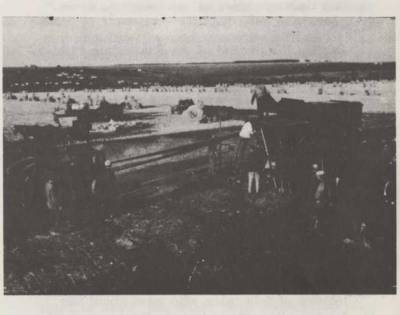
Threshing wheat on the fields in the Ukraine
|
| |
|
|
| Музыковед | Дата: Пятница, 27.11.2015, 00:12 | Сообщение # 2 |
 Генерал-майор
Группа: Администраторы
Сообщений: 463
Статус: Offline
| 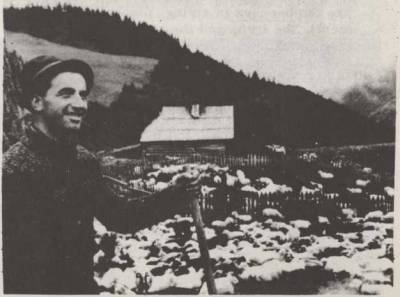
Carpatho-Ukraine shepherd with flock
MUSIC OF THE UKRAINE
The Ukrainians, an Eastern Slav people, in common with the Russian and Byelo-Russian peoples trace their origin back to the Rus. The Ukraine (total population 40, 000, 000) now includes Western Ukraine (formerly part of Poland), Bukovina, the Ismail region, Chernovitsy (formerly part of Rumania), and the Carpatho-Ukraine.
Man has inhabited the area now known as the Ukraine since pre-historic times as indicated by palaeontological findings in the Dnieper Valley and at the North Don. The first peoples of the Ukraine of whom there is any record were the Cim¬merians, supplanted in the 9th to 8th centuries B.C. by the Scythians.
From the 7th century through the 3rd century B.C. numerous Greek colonies were established along the Black Sea coast, and they carried on a lively trade with the Scythians to their north.
The Scythians were in their turn supplanted by the Sarmatians. And in the 3rd century A.D. Gothic tribes made their appearance in the Black Sea area. The Ukrainian territory, lying as it did in the path of the Asiatic nomads pushing west into Europe during this period, was crossed by the Huns who in 375 A. D. defeated the Goths in battle there. In the 4th century A.D. a Sarmatian tribe, the Alans, gained control of the Ukrainian lands, and, in the middle of the 7th century A.D. first Bulgarian tribes and then the Khazars ruled the southern steppes.
It has not been definitely established when the Slavs first appeared in the Dnieper area. There is one theory that the Slavs are the indigenous inhabitants of the Dnieper regions. It is known that in ancient times the region of the Dniqaer was inhabited by the Poliany of the Bug, by the Duleby and the Buzhans (or Volynians), of the Dniester, by the Tivertsy and the Ulich of the regions to the west of the Poliany and south of the Pripiat River, by the Drevlians, and in the areas along the left banks of the Dnieper to the north of the Poliany, by the Severians.
In the Carpathians lived the White Croats. These tribes are the ancestors of the Ukrainian people.
During the period of the Kiev state (9th to 12th centuries A. D.) with unity of state organization came a unity of religion and culture among the eastern Slavs. In 989 A.D. Christianity (the orthodox religion of Constantinopol) came to Kiev Rus through the baptism of its ruler, Volodymyr (or Vladimir), and his Druzhina, and it soon spread to the rest of the population.
It was during the epoch of Kiev Rus that folk music was especially developed in the Ukraine. The carriers of professional folk music culture were the bards and tellers of folk tales who went about the land reciting their lore to the accompaniment of all manner of instruments.Some of the oldest of the Ukrainian instruments are the bandura (a string, plucked instrument), the lyre, and the sopilka (a flutelike instrument). From the 17th century on professionalism in both secular and church music rose significantly in the Ukraine. It was quite usual to have Ukrainian bandurists perform at the Mos¬cow court. It was during this period, too, that many-voiced choral singing appeared in the Ukraine in the churches.
In its history the Ukraine has experienced invasions, occupation and successful resistance to foreign invasion. Soon after the unification of the entire Galician principality in the 12th century A. D. and the unification of the Volynian and Galician principalities under Roman Volynsky in 1199 A. D. the Ukrainian lands were invaded by Hungary, Poland, the Teutonic knights, and the Tartar-Mongols; by the Hungarian and Polish feudals again in the 14th century; from the 13th to the 15th centuries by the Lithuanians; later again by the Poles and the Lithuanians; and by the Turks (along the Black Sea) in the 15th century.
In 1569 union was established between Poland and Lithuania and as a result the Ukrainian lands transferred from Lithuanian suzerainty (under which they had been from an earlier Lithuanian invasion) to Polish control.
The Poles attempted to de-nationalize the Ukrainians. This gave strong impetus to the rise of the Cossacks -- formed from among the Ukrainian gentry deprived of their land, the urban poor, and the peasantry who ran off to the steppes to border lands. The Cossacks established their center in the Zaporozhe Sech, and in 1591 the first of a long series of Ukrainian peasant-Cossack rebellions began, culminating in the Ukrainian liberation war of 1648-54. The war ended in a peace in Poland's favor. The Ukrainian peasants and Cossacks who supported Khmelnitsky were pushed across beyond the borders of the Russian state (a southern portion of the Russian state, an area now represented by the Kharkov and Sumy regions of the Ukrainian SSR).
In 1654 the Ukrainians and the Russians were united into a single state and together they pushed back new Polish advances and defeated an invasion of the Turks and the Tartars. In 1866 Poland concluded a pact of "eternal peace" with Russia and agreed to Kiev's status as part of Russia. This latter period, one of struggle for freedom and nationhood, was fruitful in cultural activity for the Ukraine. During this period and through the 19th century culture and education prospered and spread throughout the Ukrainian lands. The art of printing grew and developed and Ukrainian teachers made wide-spread in the Moscovy monasteries and churches the technique of note -recording for music. Kiev and Kharkov with their higher schools were the center of this then-spreading culture. In the late 18th century the Ukrainian lands west of the Dnieper were cut off from Poland and incorporated into the Russian empire bringing Russia to the Black Sea.
The history of the Trans-Carpathian Ukraine was quite separate. These lands were inhabited and ruled in turn by Scythians, Gauls, Dacians, Goths, Huns, Avarians, Bulgars and Hungarians. Some time before the 9th century Slav tribes appeared here coming up from the southwest of Rus, probably from Galicia. In the 11th century this territory was conquered by Hungary. The Ukrainians were orthodox, the Hungarians catholic. The population of the trans-Carpathians developed as three main tribes: the Lemko (in the westfc the Boiko (in the center), and the Hutsuls (in the east). These lands were long part of Hungary, then of the Austro-Hungarian empire, and later, of Czechoslovakia.
|
| |
|
|
| Музыковед | Дата: Пятница, 27.11.2015, 00:20 | Сообщение # 3 |
 Генерал-майор
Группа: Администраторы
Сообщений: 463
Статус: Offline
| 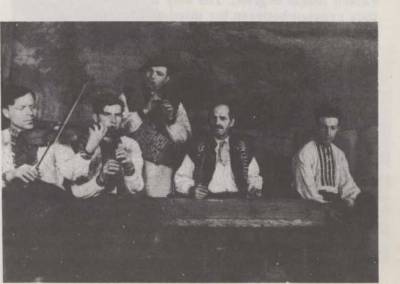
Folk musicians from Tarnopol region
Notes on the Recordings by HENRY COWELL
Side 1
Band 1. Gutsul Kolomyika -- Gutsuls are the Ukrainians living in the Carpathian Mountains, which are in Western Ukraine. Kolomyika is the name of a dance and song frequently sung by Gutsuls. This cut features a bagpipe (duda) with a single low drone tone sustained on F; above this the "chanter" (the fingered portion of the bagpipes for pro¬ducing melody) has a scale of C, F, G, A flat, A, Bflat and C (beginning with the lowest and proceeding toward the highest), However, the first section uses the C, F, G, A, Bflat, C, and the melody then modulates, or changes key, to the C, F, G, Aflat, later returning in form to the first scale. The Aflat sometimes has a tiny trill with the A, by way of ornamen¬tation. Although the result does not sowd the same in feeling, it is typical of Ukrain¬ian music to use a scale with both major and minor third, as is done in our own "blues".
Band 2. Kozachok -- Kozachok is a Ukrainian folk dance with many variaticre, and danced in many ways. The music is played on a bagpipe, this time with different tuning, but also retaining the typical Ukrainian major and minor third in the scale. This duda has a constant drone on low A, and alternating drones on the minor third C and the major third C#. The higher melody notes on the chanter are A, C, C#, D, E. At one point a dance caller breaks in with directions to the dancers, calling the changes in rhythm and a fragment of the tune (A, C#, D) just as our square dance callers do in American folk dances.
Band 3. Huculka -- a rapid dance played on mandolin-like instruments (balalaikas) and a home-made fiddle. Sometimes the dancers produce whistling chirrups and cries on accented beats, and sometimes they sing a few tones of the tune, and yell dance directions, adding greatly to the rhythmic effect. This way of bringing all the dancers into the rhythm-making is a Ukrainian feature which has spread throughout Slavic countries. Some Russian choruses have introduced it to the American public, usually with the sophisticated variation of having the whistling and calls on the off-beat instead of the accent. The scale, again with either major or minor third, is based on low G#. When the major third is used, the mode is in mixolydian form running C#, D#, E#, F#, G#, A#, B, C#. When the minor third is used, it modulates to dorian mode-form: C#, D#, E, F#, G#, A#.
Band 4. Country Dances -- This is a set of dance tunes played one after another without stopping, each in a different key or mode. The first and most characteristic mode is one more known in eastern than western music. C#, A#, B#, C#, D#, E. This changes to C#, D#, E, F#, G#, A#, B natural. Then to F# major, then to D major, then G# major and at the very aid to C# major. These major keys are outlined by the familiar tonic and dominant chords, probably picked up by ear from western Europe. Toward the end, the high fiddle imitates first the rhythmic whistling of dancers, and finally a flutter of bird-like, rhythmic sounds.
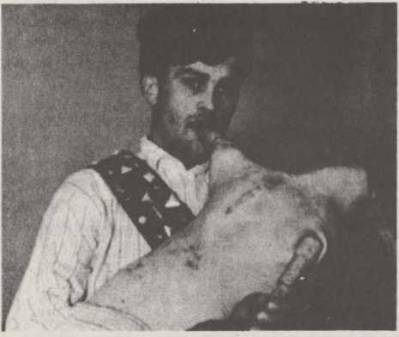
Side 2
Band 1. Wedding Melodies -- These wedding melodies are played by an en¬semble using plucked and bowed folk string instruments. The first employs a mode like a natural minor scale with a raised fourth degree. The step and a half thus created between the third and fourth tones give a strong oriental impression, as this mode is thought to be Arabic in origin. The second melody changes to ecclesiastical dorian modal form, also used like an Arabic maqam or mode.
Band 2. Hutsulka and Kozachok -- two typical folk dance tunes known throughout the Ukraine but oriental in origin and character, played by plucked stringed instruments and a high flute-like wind instrument about the size of an irish fife -- that is, smaller than a flute and a little larger than a piccolo. This tiny wind tone weaves ornamental arabesques above the rhythm of the rest of the ensemble. The scale is the natural minor with raised fourth degree,
Band 3. The Wind From The Field. Sung by a male chorus, this folk song features peasant-style singing tone - direct and open. The unwavering pitches are decorated by "graces" -- passing and neighboring tones in rapid triplets. The time uses what superficially seems to be a major scale, but is actually built on the old Greek tetracordal Ionian Mode, probably preserved in the Ukraine since ancient times. The chords consist of an interplay between the tonic and the interval of a fifth from supertonic to submediant instead of the dominant.
Band 4. One Half Of The Garden Blossoms. This is in the style of an old-Manner tune, with graces consisting of four 16th-notes along a mode which is older than the ecclesiiastical Modes of the Roman Church. It is a combination of the Mixolydian and Dorian Modes. The tonality starts with A as the seeming keynote, with the fourth degree (D) a little high in pitch, and with G flat; otherwise like A Major; but the ending note is E! The Chorus spontaneously sings consecutive fifths: A-E, G-D, F#-C#, ending on E-B. This gives a strong impression that the tune and mode and form are vestiges from the middle-ages or earlier.
Harold Courlander - editor
Moses Asch - production director
|
| |
|
|
|
Меню сайта
Календарь
Block content


|

